|
Last updated 1 July 2021
SUPER
SPREAD AVIATION DH.82 TIGER MOTHS
A celebration of the glory days of
Australian aerial agricultural Tiger Moths
|
|
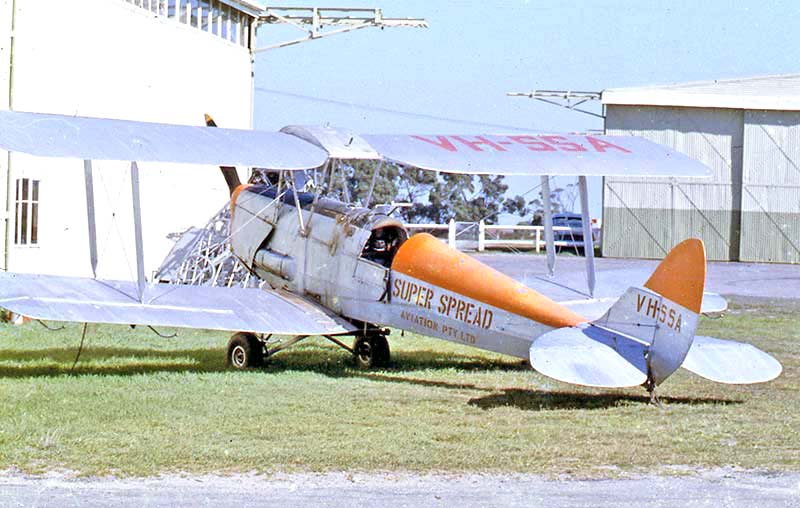
|
Typical
Super Spread Aviation agricultural Tiger Moth, pictured at home base Moorabbin
Airport, Melbourne in March 1961.
John Hopton collection
|
Super Spread Aviation Pty Ltd, Melbourne was
formed in 1952 by two former RAAF men Austin "Aussie" Miller and Ernest
"Ernie" Tadgell, who wanted to join the growing aerial agriculture
business. They started with two Tiger Moths converted for dusting
superphosphate and a lease on a hangar at Moorabbin Airport, Melbourne.
teThe company grew to become a leading aerial agricultural operator,
later introducing EP-9s, CA-28 Ceres and Cessna 180s before
standardising on Beavers. However RAAF disposals DH.82 Tiger Moths were
the backbone of the fleet for the first ten years, when a total of 28
Tiger Moths were owned.
Competitive from
the start, Super Spread Aviation sent its Tiger Moths with pilots and
support crews far and wide. Only a month after the company commenced
operations, Aussie Miller wrote off Tiger VH-AMD in an accident while
dusting at Oakey Qld on 2 September 1952. They crossed the country to
work the West Australian wheat belt each winter season from June 1953
until replaced by EP-9s and Ceres which made the long trek across to
the West up until 1964. Super Spread Tigers also carried out ag work in
SA, NSW and Queensland. DCA agreed to reserve the VH-SS_
registration block for Super Spread's use and many of the registrations
were re-used by the company on different aircraft. The
first fatal accident occurred 19 September 1954 when Doug McCutcheon
was killed while spraying at Minyip Victoria in Tiger Moth VH-SSC.
Rural Aviation Pty Ltd, Adelaide was
taken over in January 1956, adding 4 Tiger Moths, a Parafield office
and maintenance hangar, plus an order book of SA farming
customers. During 1957 when extra capital was needed to introduce
new aircraft types, a 51% share of Super Spread Aviation was acquired
by New Zealand stock and station agents and seed merchants Wright
Stephenson & Co Ltd. Then in a 1960 business reorganisation, the
original partners Miller and Tadgell sold their shares to Wright
Stephenson and left the company, with an agreement that neither would
start a new aerial ag business in Victoria within the next four years.
Ernie Tadgell moved to Toowoomba Qld to establish a successful new
aerial ag company Tadgell Aviation, while Aussie Miller purchased a
hotel at Launceston Tasmania. Miller was to reappear in 1965 as Lukey
Miller Aerial Services in Gippsland with a Beaver VH-MLB, reforming as
Western Aerial Services at Derinallum Vic.
The Department of Civil
Aviation was increasingly concerned by the high rate of pilot fatalities
and serious injury sustained in agricultural Tiger Moth accidents compared with other agricultural aircraft types.
To protect the pilot's head when the aircraft overturned, in 1960 an approved
overturn truss was mandated for all agricultural DH.82s in Australia. DCA
later implemented a 3 year retirement plan for the remaining 70 agriculrural
Tigers leading up to a final grounding for agricultural use on 31 December
1965. Super Spread Aviation sold its final Tigers the previous year and
they went on to long lives as valued vintage aircraft with private owners.
|

|
The standard
Tiger Moth overturn truss incorporating the pilot's harness.
Photo by Neil Follett
|
Super Spread Aviation continued to grow, merging with Proctor's Rural Services
(Alexandra Vic), Air Mist Pty Ltd (Tasmania and Adelaide) and Robbys Aerial Services (Adelaide). A
major change came in 1963 when Aerial Agriculture Pty Ltd, Sydney
took over Super Spread and standardised on DHC-2 Beavers and Callair
A9As. Aerial Agriculture's Manager and founder Tom Watson spent
1963-1964 at Super Spread's Moorabbin office to manage the transition.
Super Spread continued under its own name for another two decades.
My thanks to the photographers
who took these pictures, especially Neil Follett who dug out so many of
his early negatives.
|
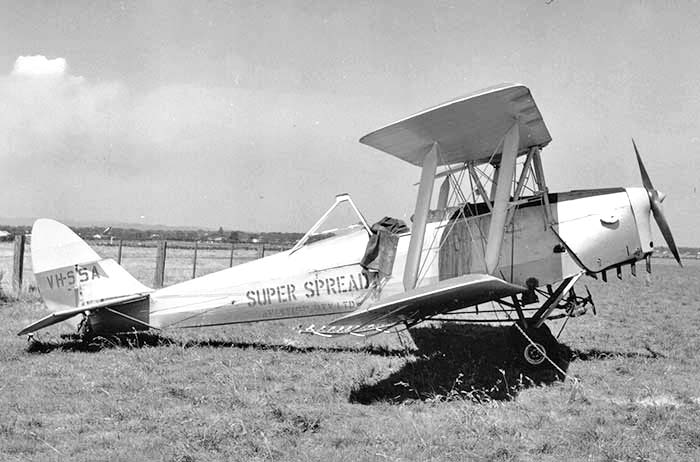
|
VH-SSA
joined the fleet in 1953 and survived until crashing into trees near Skipton
Victoria 2 January 1963.
Seen at Moorabbin
January 1962 with the pilot's leather jacket slung aross the cockpit.
Photo by Peter R. Keating
|
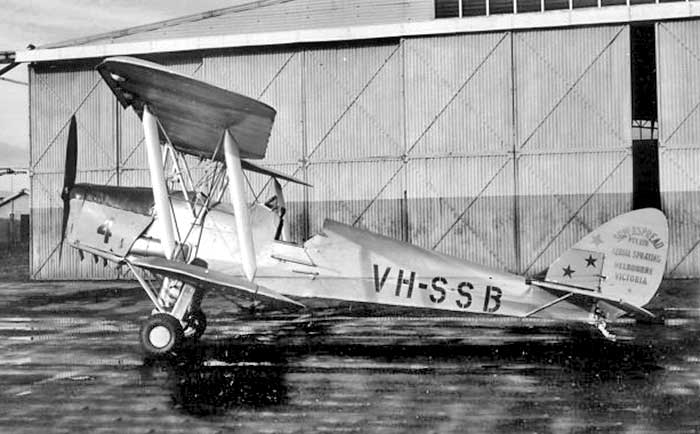
|
This
is the first VH-SSB, fleet No.4, photographed at Moorabbin in August 1953
by Eddie Coates
|
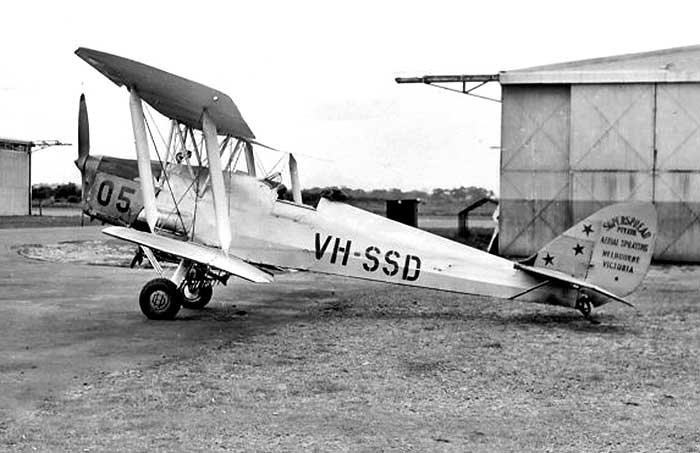
|
Eddie
Coates photographed VH-SSD fleet No.5 at Moorabbin in 1954. It
was sold in 1959
|
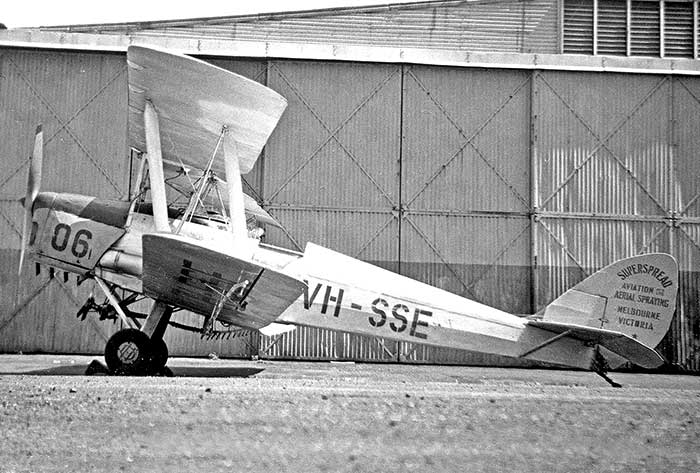
|
VH-SSE
with dayglo orange cowling and rudder, fleet number 6, crashed at Myrtleford
Vic in December 1960.
Photo by Neil Follett
|
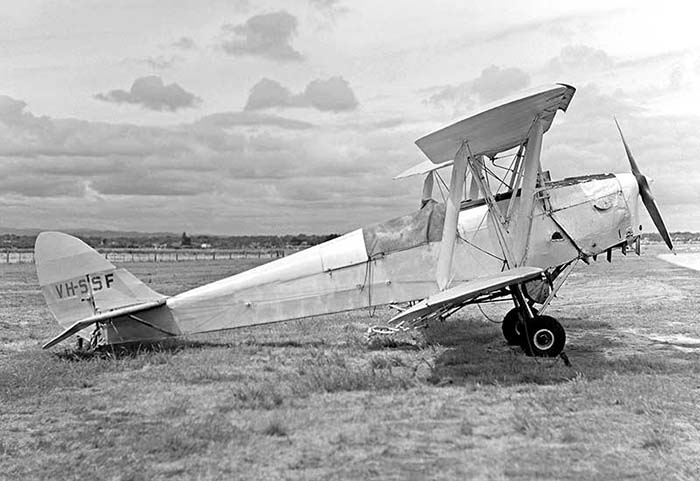
|
VH-SSF
at Moorabbin in March 1961 was written-off the following
year.
John Hopton Collection
|
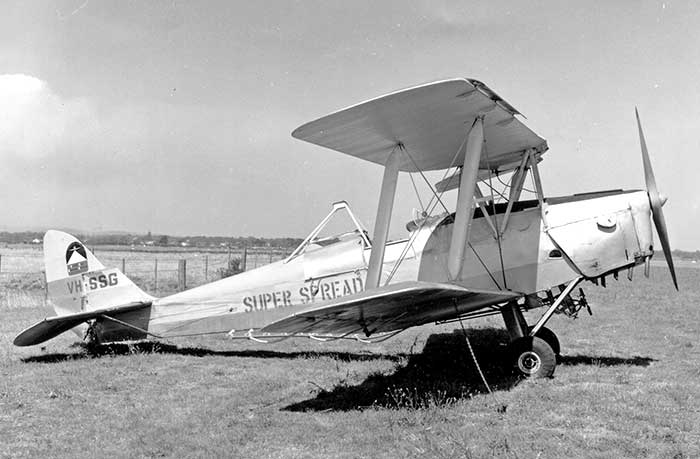
|
VH-SSG
at Moorabbin in January 1962 was transferred to associate company Air Mist
later that year.
Photo by Peter
R. Keating
|
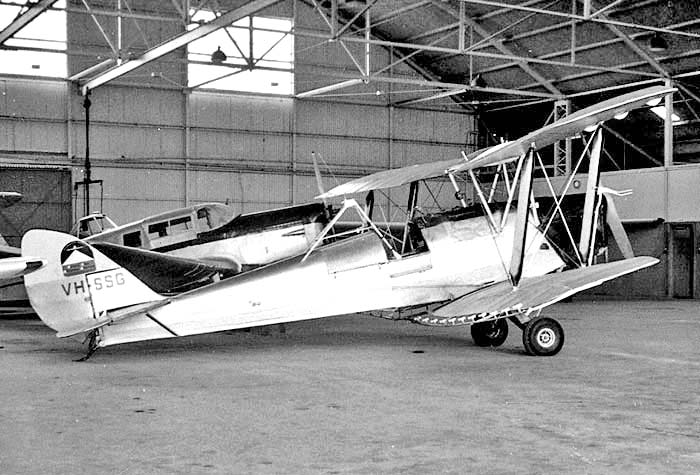
|
VH-SSG
at Parafield in December 1963 now with Air Mist Pty Ltd, a company taken
over by Super Spread.
Air
Mist continued under its own name in SA, Victoria and
Tasmania.
Photo by Geoff Goodall
|
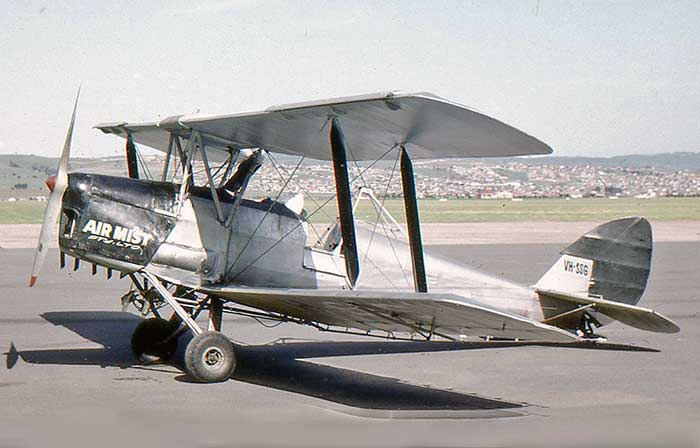
|
VH-SSG
at Parafield in September 1964, now painted in Air Mist Pty Ltd markings.
Photo by John M.
Smith courtesy SA Aviation Museum
|
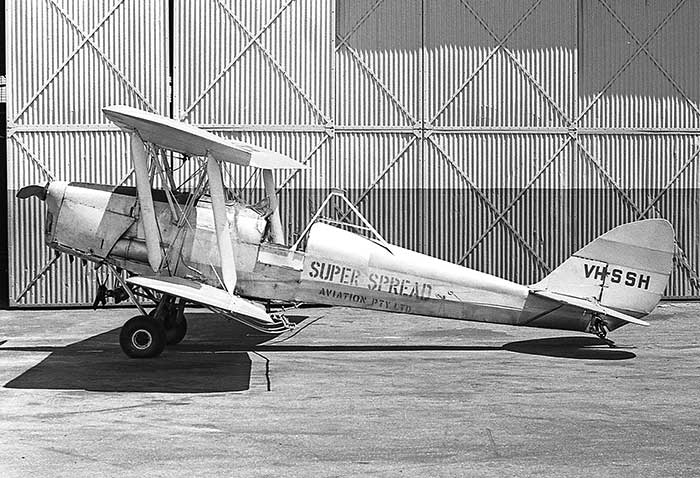
|
VH-SSH
outside the Super Spread hangar at Moorabbin in
1960.
Photo by Neil Follett
|
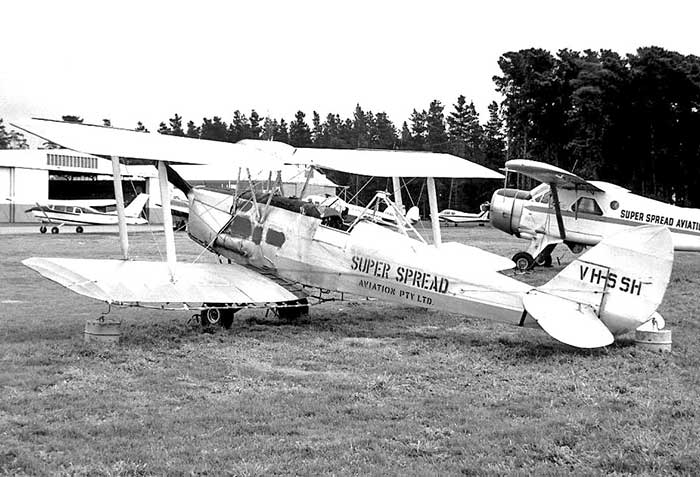
|
VH-SSH
on the grass at Moorabbin in May 1964 with red-doped fabric repairs.
It was sold to
Melbourne private owner in December that year.
Photo by Geoff Goodall
|
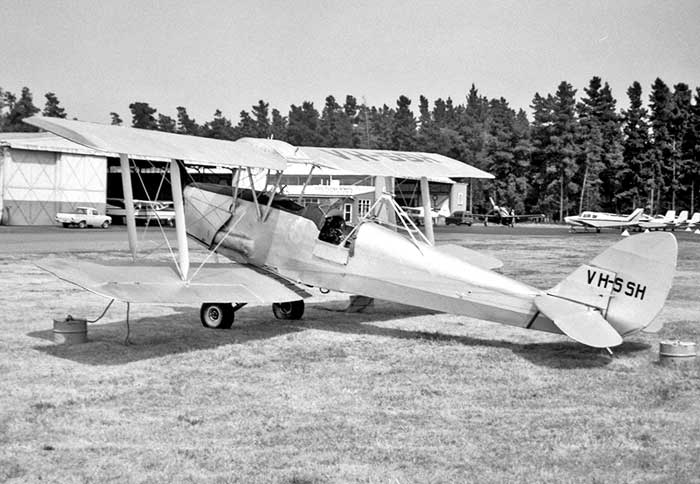
|
VH-SSH
at Moorabbin in February 1965 now privately-owned. It was restored back to a two-seater
later that year.
Photo by Geoff
Goodall
|
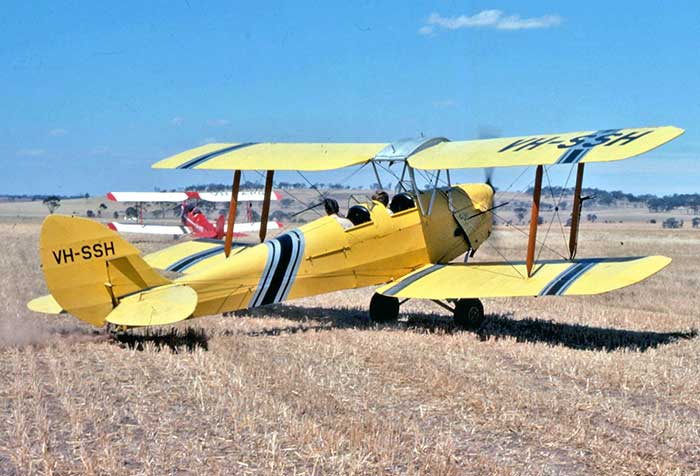
|
Typical
of so many former ag Tigers, VH-SSH went on to a long active life as a valued
vintage aircraft.
Seen at Beverley
WA in November 1980.
Photo by Geoff Goodall
|
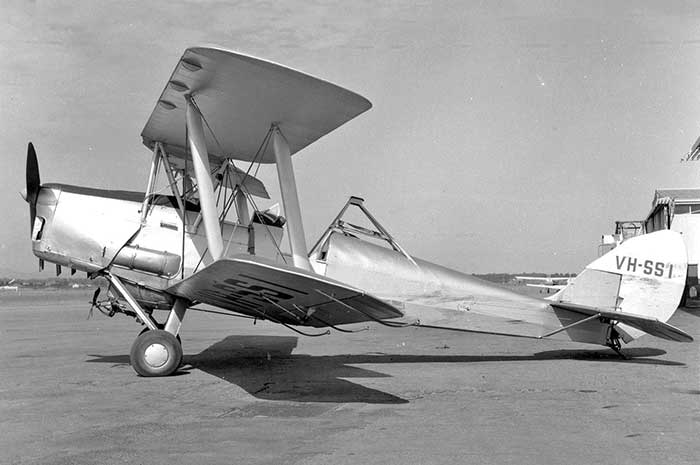
|
An
classic portrait of VH-SSI at Moorabbin November 1962: silver, red lettering
and dayglo orange panels.
Photo by Richard Hourigan
|
|
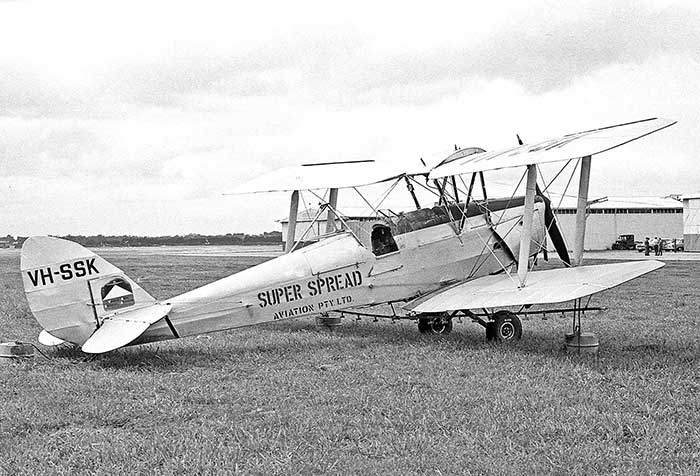
|
VH-SSK
at Moorabbin in March 1963. It was sold later that
year.
Photo by Neil Follett
|
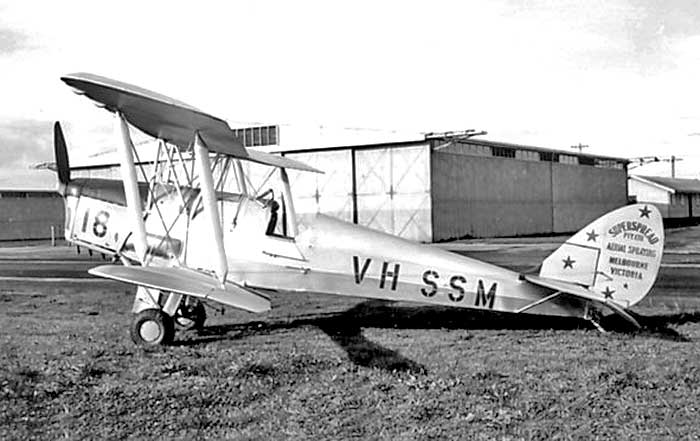
|
VH-SSM
at Moorabbin in 1955, fleet No.16 was sold in 1959.
Photo
by Eddie Coates
|
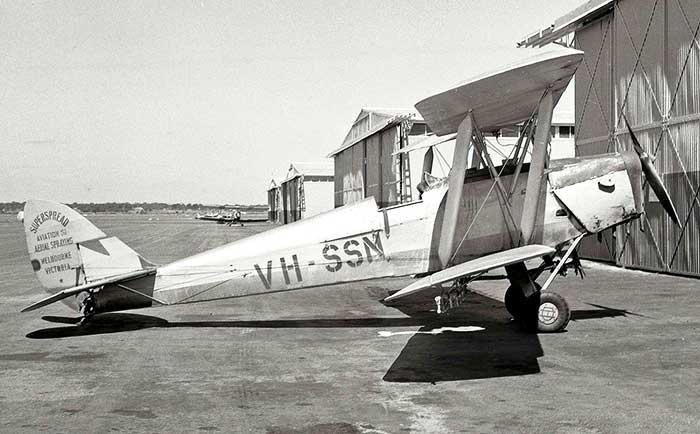
|
VH-SSN
was in the Super Spread fleet from 1954 to 1961 when
sold.
Photo by Neil Follett
|
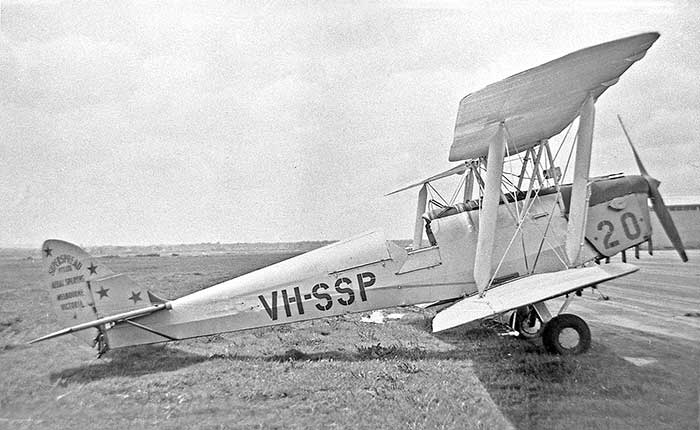
|
VH-SSP
fleet No.20 at Moorabbin. It was sold in 1958.
Photo by Neil Follett
|
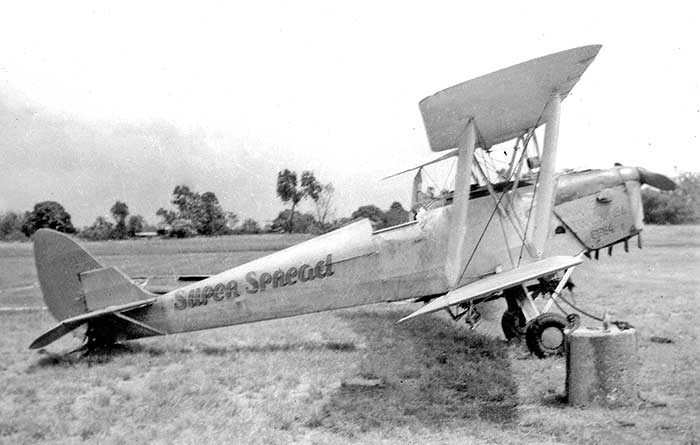
|
VH-SST at a country airfield around 1958, with Super Spread painted in an unusual style.
Neil Follett collection
|
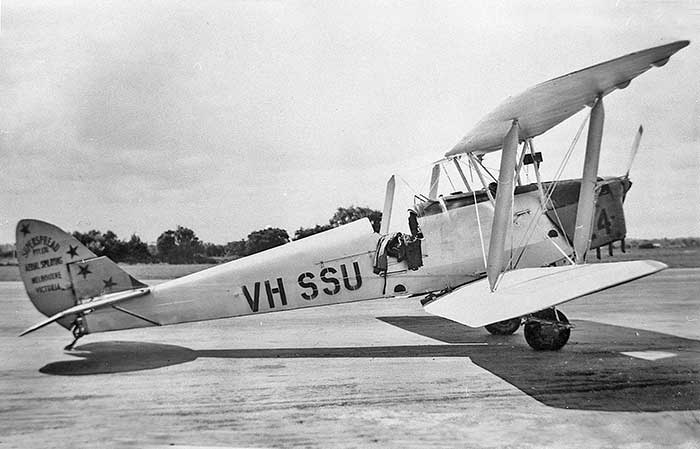
|
VH-SSU
at Moorabbin shortly before it was wrecked while crop dusting near Cobden
Vic in March 1957.
The
pilot received minor injuries.
Photo
by Neil Follett
|
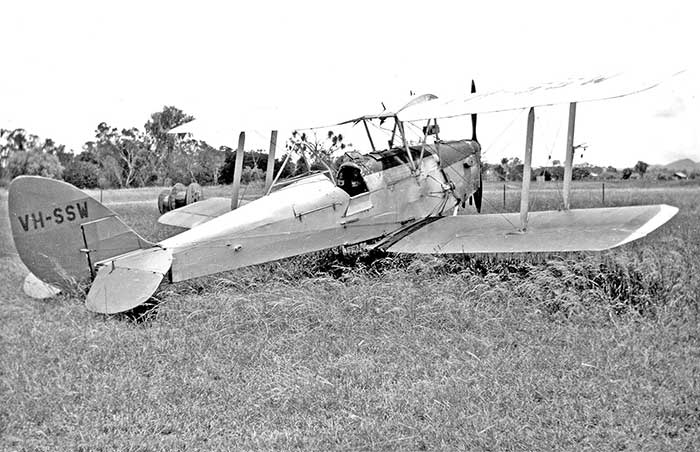
|
VH-SSW
in 1960 as a crop duster.
Neil Follett Collection
|
|
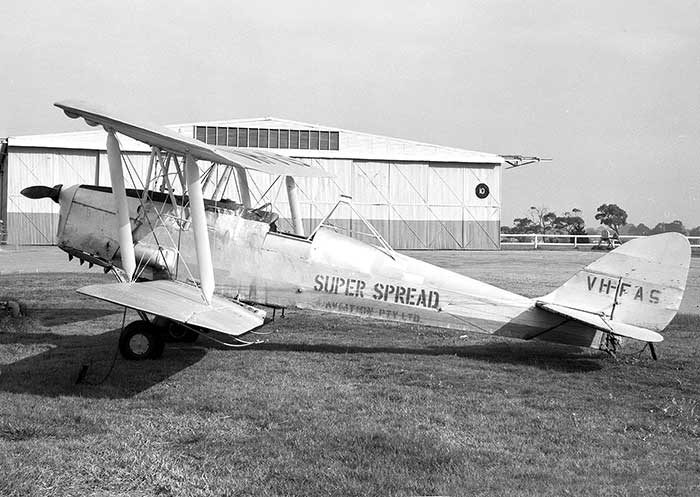
|
VH-FAS
came from Rural Aviation in Adelaide which was taken over by Super Spread
Aviation in 1956.
Photographed at
Moorabbin in July 1961 by Neil Follett
|
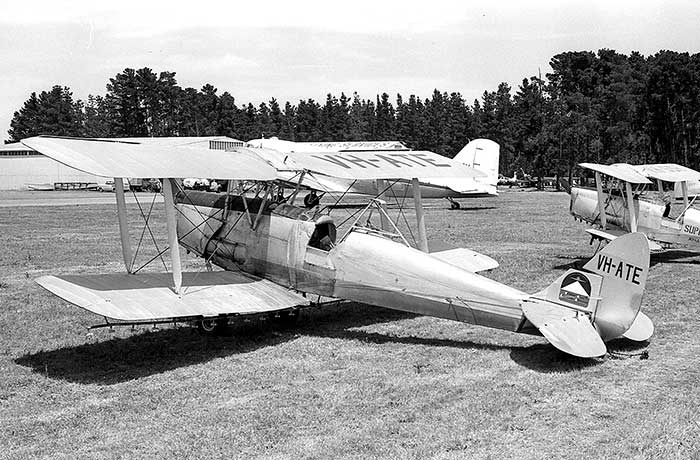
|
|
|
VH-ATE
seen on the grass opposite the Super Spread hangar at Moorabbin in 1961
became VH-SSK.
Photo by Neil Follett
|
|
|

|
|
|
VH-BBD
came from Rural Aviation, Adelaide. Photographed at Moorabbin in 1957 by
Barrie Colledge
|
|
|

|
|
|
VH-BBD
at Parafield SA in August 1962 in an unusual green, white and silver paint
scheme.
Photo by Geoff Goodall
|
|
|

|
|
|
VH-BBD
back in standard Super Spread scheme at Moorabbin early 1963 before it was
reregisterd VH-SSB.
Photo by Neil Follett
|
|
|
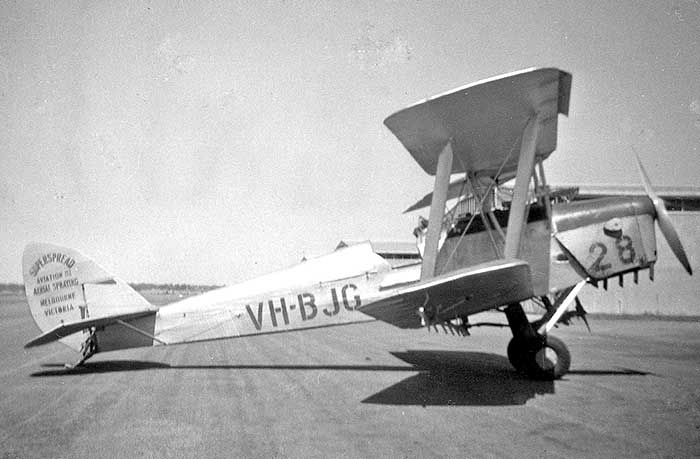
|
|
|
VH-BJG
fleet no.28 purchased in 1956 crashed a long way from home at Rockhampton
Qld in February 1958.
Photo by Neil Follett
|
|
|

|
|
|
VH-AOF
was another Tiger Moth acquired in the 1956 takeover of Rural Aviation at
Parafield SA.
Seen at Moorabbin
in 1958, it was written off the following year.
Photo by Neil Follett
|
|
|
Other
Super Spread Aviation aircrfaft types during the Tiger Moth era:
|
|
|
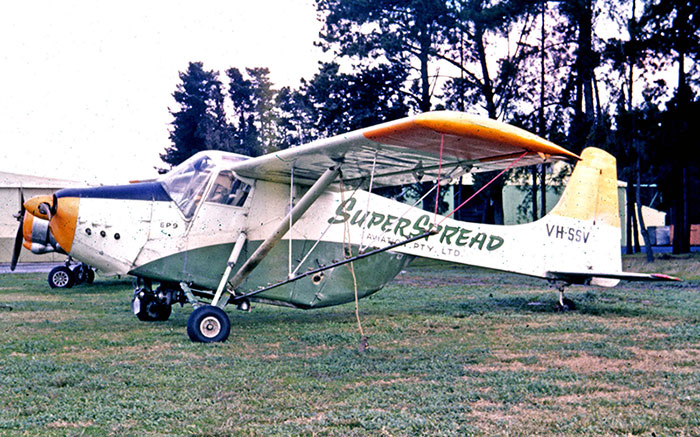
|
|
|
Super
Spread introduced the Edgar Percival EP-9 in Australia in 1957, operating
four until 1964.
VH-SSV at Moorabbin
1961.
John Hopton Collection
|
|
|
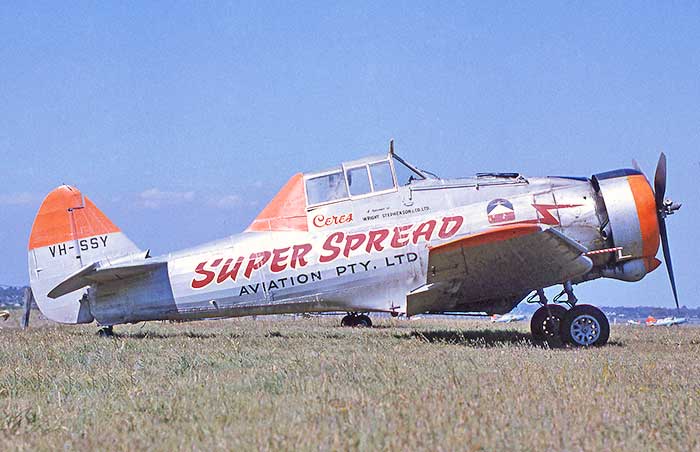
|
|
|
VH-SSY
at Moorabbin 1962 was one of four Super Spread CAC CA-28 Ceres.
Photo by Neil Follett
|
|
|
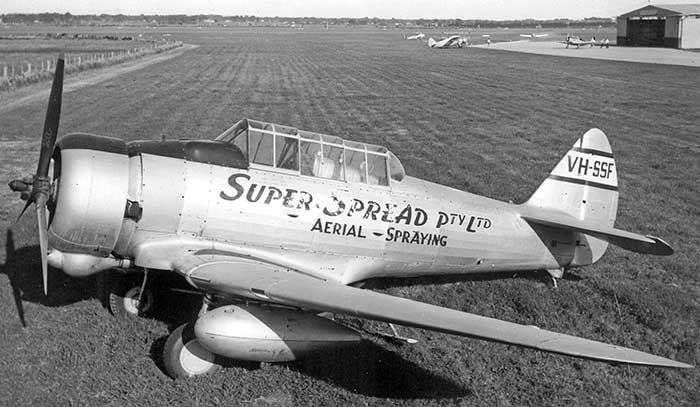
|
|
|
Two
RAAF disposals CAC Wirraways VH-SSF and VH-SSG were flown on aerial agricultural
trials 1954-1956.
VH-SSF seen retired at Moorabbin circa
1958.
Photo: Barrie
Colledge
|
|
|
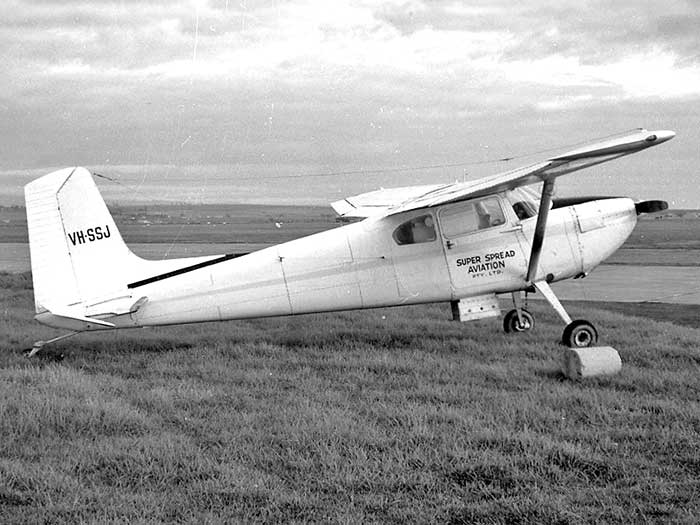
|
|
|
A
total of seven Cessna 180s were purchased from 1962 as direct replacements
of the Tiger Moths.
VH-SSJ at Parafield
in May 1963
Photo by Geoff Goodall
|
|
|
|
|
|
| | | |
Back to the Australian
Aviation Menu

| | |
|
|
|
































